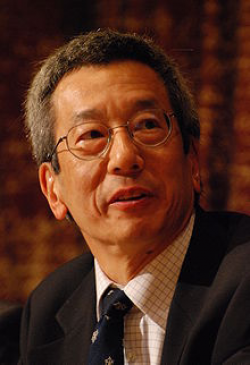Professor Roger Tsien

- Born
- 1 February 1952
Roger Tsien was awarded the Nobel Prize in Chemistry in 2008 for ‘his discovery and development of green fluorescent protein (GFP), with two other chemists; Martin Chalfie (Columbia University), and Osamu Shimomura (Boston University)
Tsien studied at Harvard University and received a PhD in physiology from the University of Cambridge in 1977. He was a researcher at Cambridge until 1981, when he moved to the University of California in San Diego and became a professor.
His research focussed on developing a better dye to track the levels of calcium found inside the cells, and plays a critical role in numerous physiological processes. At that time, measuring intracellular calcium was a very complex process, involving binding a calcium-binding protein through the cell membrane, and damaging the cells.
Tsien produced organic dyes which twist when they bind calcium, changing the dyes fluorescence, and he discovered a method of disguising the dyes so that they could pass through the cell membrane without being injected.
In 1994, Tsien and his colleagues started his most famous work on the development of green fluorescent protein (GFP), which naturally occurs in the jellyfish Aequorea victoria.
They discovered that GFP provides a visual signal which scientists can use to identify protein activity, such as the production of proteins and the various different proteins which are produced in different areas of the cell.
I've always wanted to do something clinically relevant in my career, if possible, and cancer is the ultimate challenge.
Roger Tsien
Tsien engineered GFP to emit colours ranging from blue to yellow. He expanded the colour palette of fluorescent proteins to include oranges, reds, and purples.
Recently, Tsien’s research has focussed on the imaging and treatment of cancer, and he has developed U-shaped peptide molecules to carry a ‘payload’, an imaging molecule for a chemotherapy drug. The peptides are substrates for protein-cleaving enzymes which when cleaved at the bottom of the U shape, the two arms of the U extend and separate, and one arm is free to drag the payload section of the peptide through the cell wall, into the neighbouring cell.
Tsien was awarded the Nobel Prize in 2008 for Chemistry for expanding the GFP’s colour palette.



